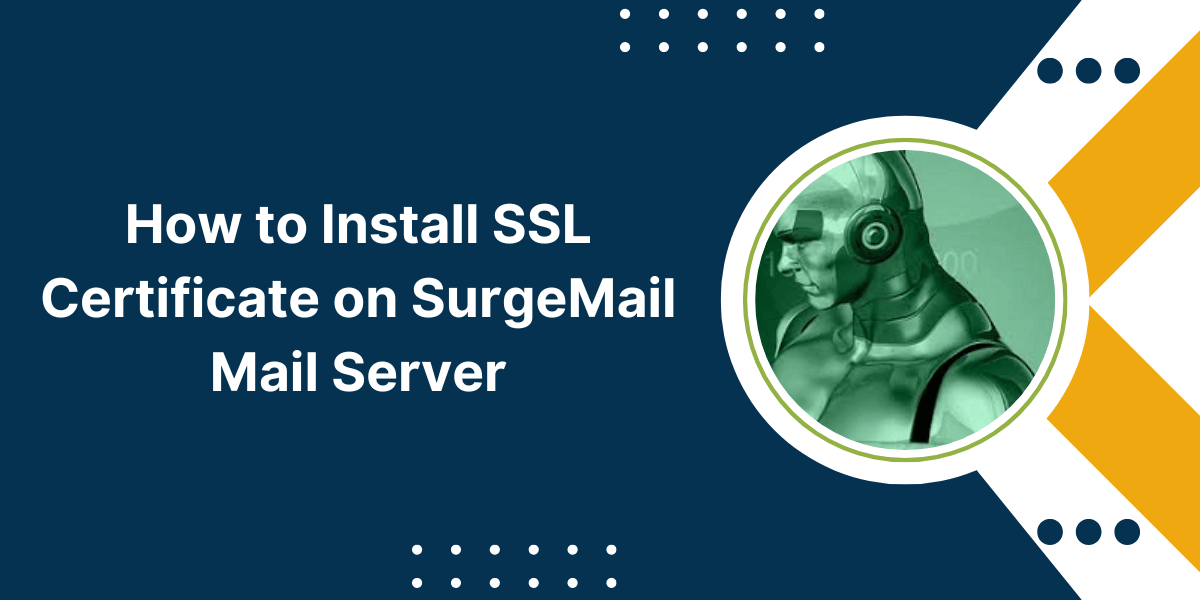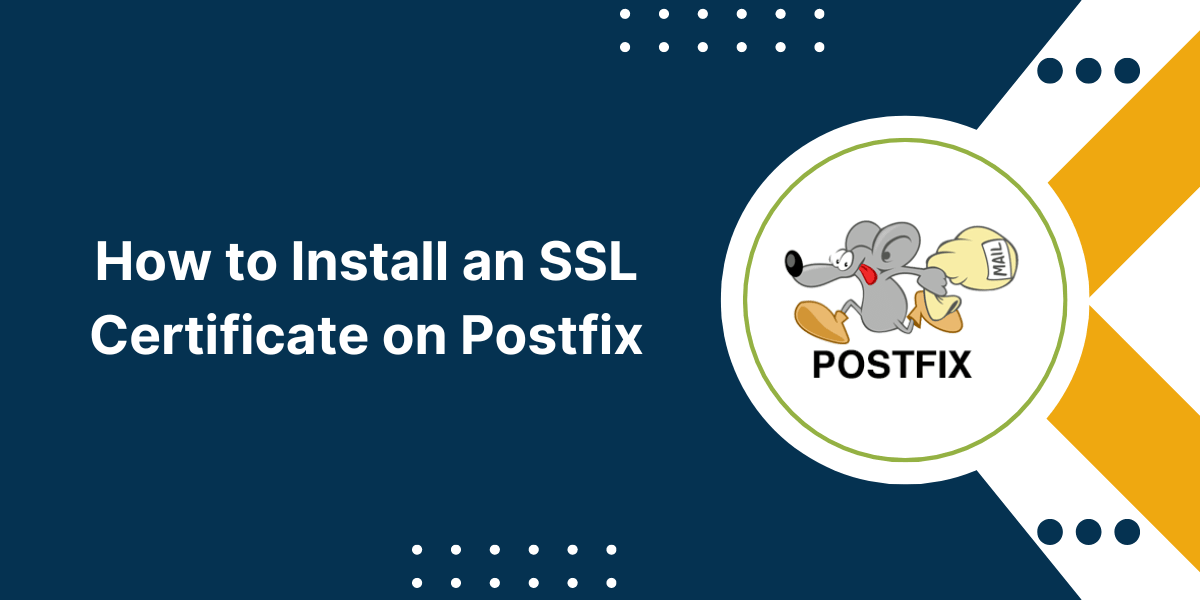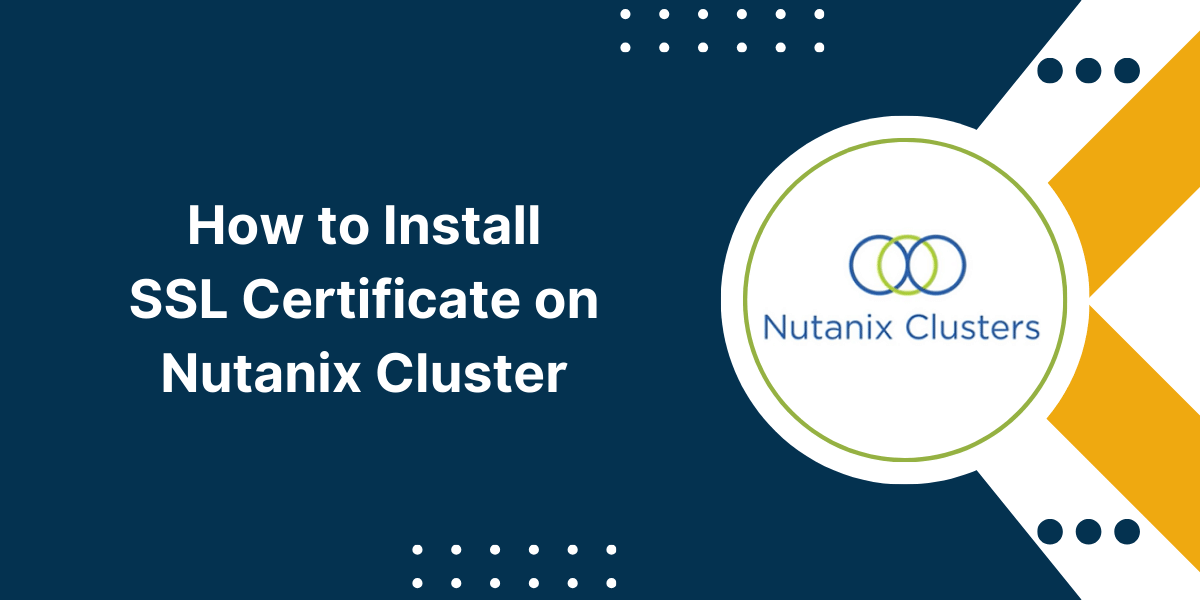SSL Certificate Installation Guide on SurgeMail Mail Server
An SSL certificate allows you to enable SSL/TLS encryption for your SurgeMail email server. Adding an SSL certificate protects sensitive data sent to and from your email server by encrypting the connection. It also provides verification that your email server is legitimate through trust with a certificate authority. Installing an SSL Certificate on SurgeMail Mail Server allows you to enable SSL/TLS encryption for your SurgeMail email server.
After following this tutorial, you’ll have an SSL certificate installed and SSL encryption enabled on your SurgeMail server.
Benefits of Adding an SSL Certificate to SurgeMail
There are many advantages to installing and using an SSL certificate on your SurgeMail email platform:
Data Encryption
The main benefit is activating SSL encryption for secure data transfer. Sensitive customer and company information will be encrypted and protected as it travels between email servers. This prevents unauthorized access or data leaks.
Trust and Credibility
An SSL certificate also inspires trust and confidence in your brand. The padlock icon signals that communications with your domain are secure. This verification can help provide credibility.
Compliance
Depending on your industry, enabling SSL encryption may be a requirement for compliance with regulations like HIPAA or PCI DSS. An SSL certificate helps demonstrate compliance.
Search Engine Rankings
Websites and domains using SSL certificates can benefit from a slight boost in search engine results pages. This is because Google favors websites that use HTTPS encryption.
Generating a CSR on SurgeMail
To install an SSL certificate on SurgeMail, you first need to generate a Certificate Signing Request (CSR). Here are step-by-step instructions:
- Log into your SurgeMail administrative control panel
- Go to Configuration and Security > Certificates
- Click the Add button to generate a new CSR
- Enter your desired domain name entries
- For a single domain enter your primary mail domain
- For a wildcard enter *.yourdomain.com
- For multi-domain/SAN enter all additional domains
- Set the certificate purpose based on whether recipients, senders or both require encryption
- Choose a Digest Algorithm (SHA-2 recommended)
- Set public and private key lengths (minimum 2048 bits for the private key)
- Add location and department details along with administrator name
- Click “Generate New CSR” when ready
- Copy and paste the entire CSR code string starting with —–BEGIN CERTIFICATE REQUEST—– and save this for later. This will be required for installing your certificate.
You now have a certificate signing request with all necessary mail server information for the CA to verify and issue your purchased SSL certificate.
The next step is to choose your preferred certificate provider and purchase the right cert for your domains.
Uploading the SSL Certificate
After purchasing an SSL certificate, you’ll receive certificate files from your provider. These usually include a root certificate, domain certificate, intermediate certificates, and private key file if not using the CSR private key.
Here is the upload process to install your new SSL certificate on SurgeMail:
- Return to Configuration and Security > Certificates in SurgeMail
- Click “Add” and this time choose the “From PEM Encoded File” option
- Give your new certificate a relevant name
- Upload or paste the certificate domain file first
- Upload or paste any required intermediate certificates
- Upload or paste only the private SSL key if required or keep existing private key from the CSR
- Click Install Certificate
Your SSL certificate is now uploaded into SurgeMail but encryption won’t be active yet until the next reboot.
Installing the SSL Certificate on SurgeMail
After a successful upload, you must install and activate the SSL certificate for it to take effect on your mail domains.
Here are the activation steps:
- When in Certificates, click your new SSL certificate name
- Click Install Certificate
- Check the box for Restart SMTP and IMAP services on install
- Click Install in the confirmation prompt
This will initiate a SurgeMail restart sequence. All mail services will go down temporarily during the reboot. This allows your new SSL certificate security settings, keys, encryption ciphers, and protocols to load correctly.
Mail activity should automatically resume within a minute or two after rebooting completes.
Your new SSL certificate is now installed and encrypting connections on SurgeMail using the domains and private key from the original CSR.
Testing Encryption is Working
Before routing live email over encrypted channels, it’s important to validate everything is working as expected.
Here are a few ways to test SSL functionality:
- Browse to any domain secured by your SSL certificate and check for a padlock icon and https protocol.
- Click the padlock and inspect the certificate details matching your domains, CA trust etc.
- Use OpenSSL to attempt connections and view certificate details.
- Send test messages between accounts and examine headers for encryption status.
- Check for any errors or warnings under Configuration and Security > Log Files.
If encryption is active and functioning without warnings orcert errors, you can fully utilize your mail domains knowing data is secured by your new SSL certificate.
Renewing an SSL Certificate
SSL certificates are only valid for a set validity period – usually 1-2 years. You’ll need to renew your certificate before expiration to maintain security and avoid mail delivery errors.
If using a reputable Certificate Authorities they’ll send you expiration reminders by email. Here’s the simplest renewal process:
- Generate a fresh certificate signing request in SurgeMail or recopy your original CSR.
- Re-validate your domains if contacted by your CA.
- Purchase and deploy your renewed certificate using the same installation process.
Renewing will ensure you keep the same level of browser-trusted security for your mail data without any encryption lapse or security risks from an expired certificate.
Conclusion on Install SSL Certificate on SurgeMail
Installing an SSL certificate on SurgeMail provides significant security and compliance for your mail domains by encrypting connections using the latest TLS protocols. Carefully choosing the appropriate certificate type, provider, and following the step-by-step generation, purchase and installation guide above allows you to enable encryption with minimal hassle and maximum protection.
Activating SSL on your email infrastructure demonstrates you value privacy while giving customers and contacts peace of mind communicating securely with your organization. Maintaining best practices like renewing certificates before they expire will ensure long term stability of your encrypted mail environment.
Frequently Asked Questions about Install SSL Certificate on SurgeMail
What’s the difference between SMIME and SSL encryption on a mail server?
SMIME (Secure/Multipurpose Internet Mail Extensions) is user-focused email encryption that requires locally installed desktop client certificates to encrypt messages for secured recipients. It can be complex for average email users. SSL certificates instead provide server-level encryption securing the delivery channels and connections between mail servers, not necessarily the messages themselves. Enabling SSL is simpler and still protects all data in transit universally. Some platforms support combining both SMIME and SSL for comprehensive email encryption capabilities.
Is SSL encryption necessary if my SurgeMail server is already behind a firewall?
While firewalls provide access control to block unauthorized traffic, data transported between your mail server and others on the public internet is still unsecured. SSL encryption protects sensitive email content, attachments, headers etc. from risks like man-in-the-middle attacks that can intercept unencrypted streams. Running SurgeMail internally with no legitimate need for public end-user access is the only situation where SSL may not be essential.
What mail domains can I secure with a single SSL certificate?
A certificate with support for Subject Alternative Names (SAN) allows securing multiple domains and subdomains. If consolidating services to a single SurgeMail server you can encrypt mail delivery across all company domains, along with app domains for webmail access etc. Some specialized certificates also allow internal or private domains just for mail routing purposes that won’t display publicly. This depends on the Certificate Authority policies. In some cases, separate certificates may simplify administration for entirely different domain groups.
What is SMTP Strict Transport Security (STS) related to SSL?
SMTP STS provides an added layer of security to enforce encrypted channels for deliveries to domains asserting an STS policy. After connecting via SSL once per STS validity period, sending MTAs can automatically default to TLS encryption without cleartext fallback for future messages to STS-enabled destinations. This eliminates risks of accidental data leakage over unencrypted connections. SurgeMail supports STS and enforced TLS when delivering mail to sites advertising STS, adding compliance on the outbound side.
What troubleshooting steps should I take if SSL isn’t working properly after installing a certificate in SurgeMail?
Start by confirming clean certificate installation without errors or mismatches. Also verify your encryption protocols, cipher suites or authentication methods aren’t blocking connections. Temporarily open these up wider through custom control panel options for testing. Examine SMTP transmission logs between properly configured accounts on both ends. Try connecting with SMTP debugging tools to isolate any issues if messages aren’t sending over encrypted channels as expected. Scrutinize all errors to narrow down problems, then contact your certificate provider or SurgeMail support if unable to determine and resolve the cause.



